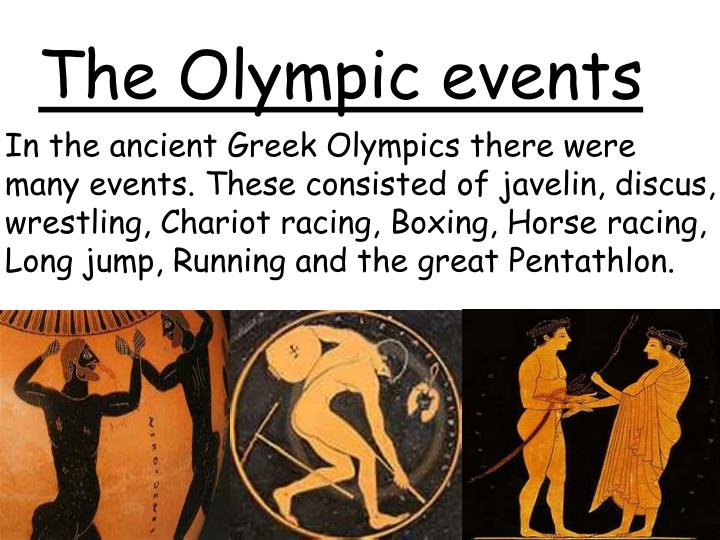
The first Olympics is traditionally dated to 776 BC. They were held in honor of Zeus, and the Greeks gave them a mythological origin.
#ANCIENT GREEK OLYMPICS CHARIOT RACES SERIES#
The Olympic Games (Ancient Greek: Ὀλύμπια, Olympia, "the Olympics" also Ὀλυμπιάς, Olympias, "the Olympiad") were a series of athletic competitions among representatives of city-states and one of the Panhellenic Games of ancient Greece. It was introduced at the first modern Olympic Games, at Athens in 1896.The ancient Olympic Games were originally a festival, or celebration of and for Zeus later, events such as a footrace, a javelin contest, and wrestling matches were added. Interestingly, the marathon event - despite being named after an ancient Greek city - was not part of the ancient programme. The runner won a total of 12 titles across four-consecutive Olympiads (164-152 B.C.) and was hailed as a hero among men. The Michael Phelps of the ancient Olympics was undoubtedly Leonidas of Rhodes. Athletes could resign through waving a finger in the contact sports, but death was still commonplace. This event was a combination of wrestling and boxing, where neck holds and strangling were permitted, and only biting and eye-gouging were forbidden.
#ANCIENT GREEK OLYMPICS CHARIOT RACES FULL#
These were the discus, long jump (using weights from a standing jump), javelin, running, and wrestling.Īmong the various horse races was the ‘kalpe’ where the rider would jump off their mare and run alongside them for the last lap.Įach event was intended to train men for war, which was perhaps best personified by the ‘hoplitodromos’ race, where athletes had to complete between two and four lengths of the stadium wearing a full set of hoplite armour. Like it’s modern equivalent, the ancient pentathlon included five different events.


The earliest additions were running events of different lengths, as well as wrestling, pentathlon, boxing and for the wealthiest competitors, chariot racing. After a small part of each animal was burned for the god, the rest of the meat was consumed by the people at a grand banquet.įor the first 12 ancient Olympics, the only event was a short footrace of about 190m - or one length of the stadium - called a ‘stade’.Įventually, the Games expanded from one day to five, as a total of 18 events were added to the programme. This is entirely plausible, given that sporting events were often associated with funeral rituals.ĭuring the festival, a vast number of oxen were sacrificed in honour of Zeus.

However, some historians believe that the ancient Olympics were actually funeral games held in honour of deceased local heroes. This would help explain why it was named after Mount Olympus - where the Greek gods were said to have lived. One theory is that it was a festival in honour of Zeus. There is some historical dispute over the reason behind the ancient Olympics.

2 - Religious origins of the Olympic Games It was a hugely sacred area, featuring picturesque olive tree plantations and a giant statue of the god Zeus.īy the second century BC, the main stadium held approximately 45,000 people, who stayed in tents around the building. The Olympics were named after Mount Olympus, but they were actually held in the rural sanctuary of Olympia, in Greece’s western Peloponnese region. Picture by 2016 Getty Images 1 - The ancient Olympic stadium


 0 kommentar(er)
0 kommentar(er)
